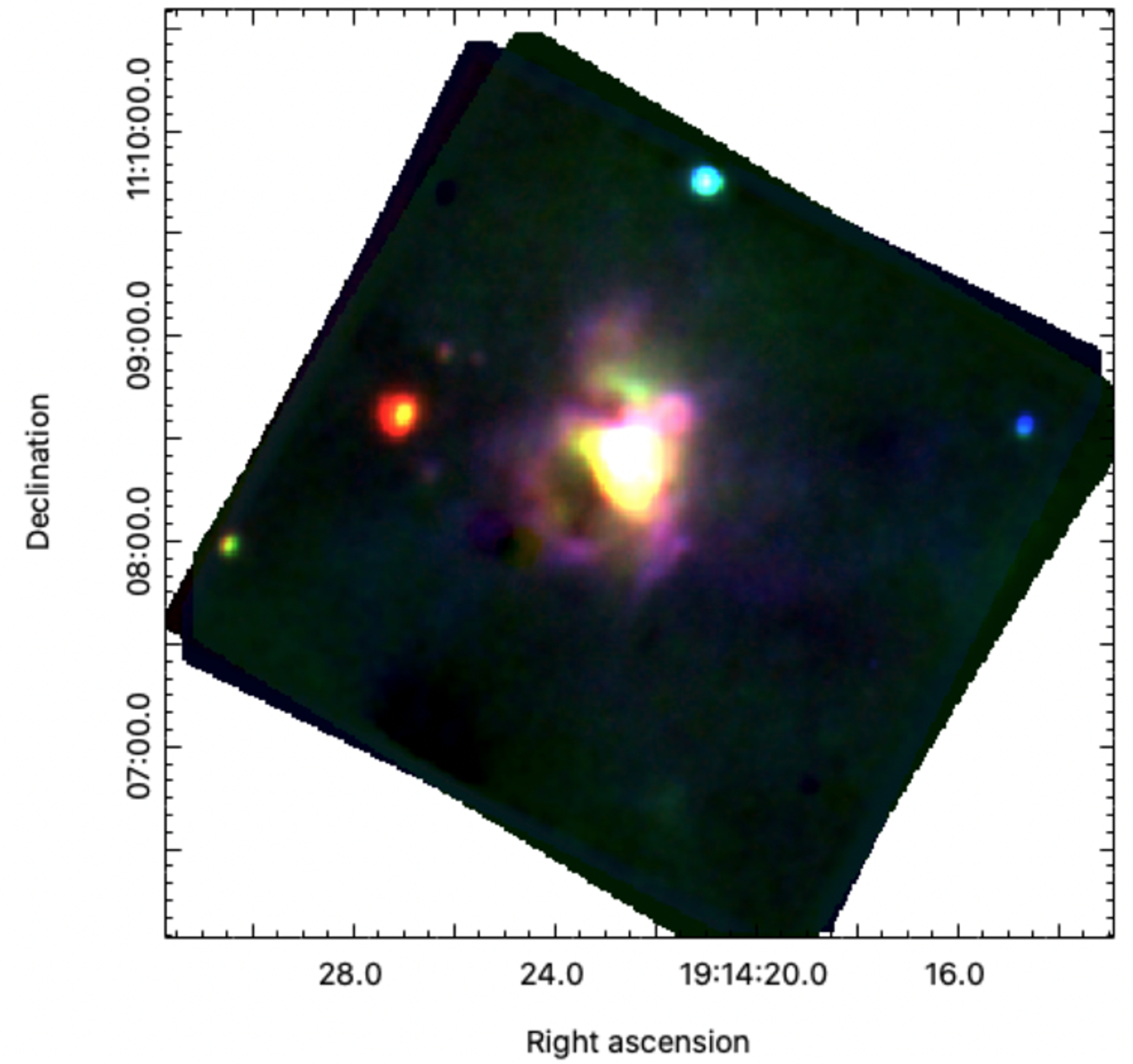Compact HII regions allow us to investigate the early phase of the interaction between the young massive stars and their environment. Polycyclic aromatic hydrocarbon (PAH) molecules and dust play an important role in the evolution of the properties of the HII regions.
SOFIA/FORCAST covers all the emissions of the different dust components, from PAH to big grains, allowing the study of the properties of each dust component and their distribution within the gas phases. Combining the properties of the different dust components with the properties of the ionizing source and the gas phases, we can investigate the interplay with the different components of the compact HII region and link their co-evolution at their early stage (Salgado et al. 2012) .
Photometric images at 6.4, 6.6, 7.7, 19.7, 24.2, 31.5, and 37.1 mm of the ultracompact HII regions G45.45+0.06 and G23.96+0.15 are publicly available from the IRS SOFIA Archive (FORCAST, project 01_0034). In addition, also the photometric image of HII region NGC7538 at 7.7, 19.7, 24.2, 31.5, and 37.1 mm, already published by Sandell et al.2020 , are publicly available from the IRSA SOFIA Archive (FORCAST, project 01_0034). These mid-infrared images cover the emission of the PAH, small grains, and big grain.

Three-color image of G45.45+0.06 with FORCAST images at 7.7 mm (blue), 19.7 mm (green) and 37.1 mm red.